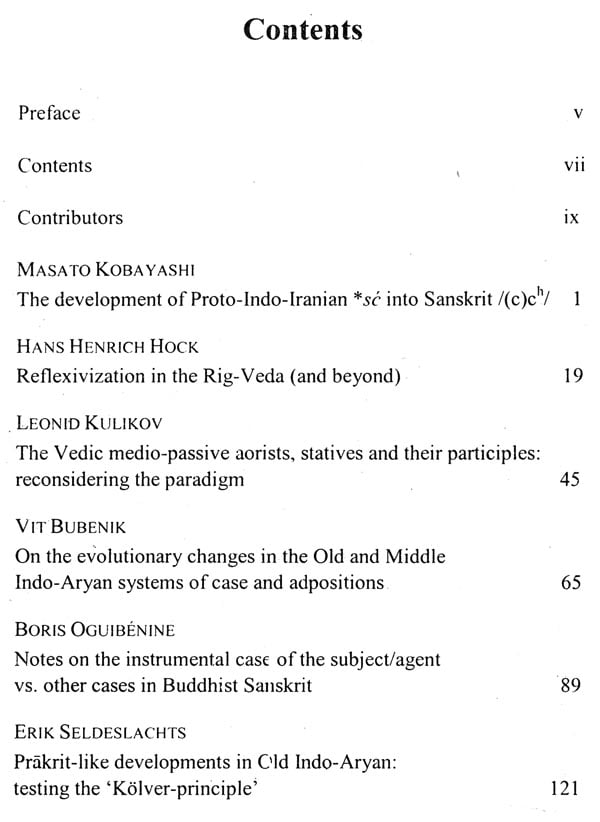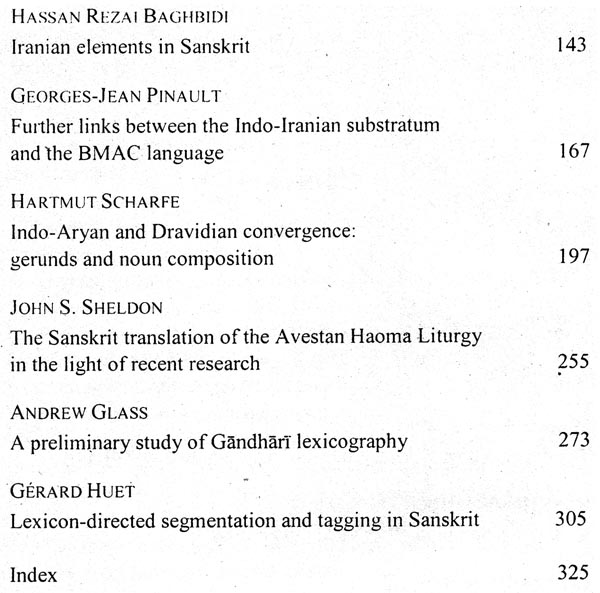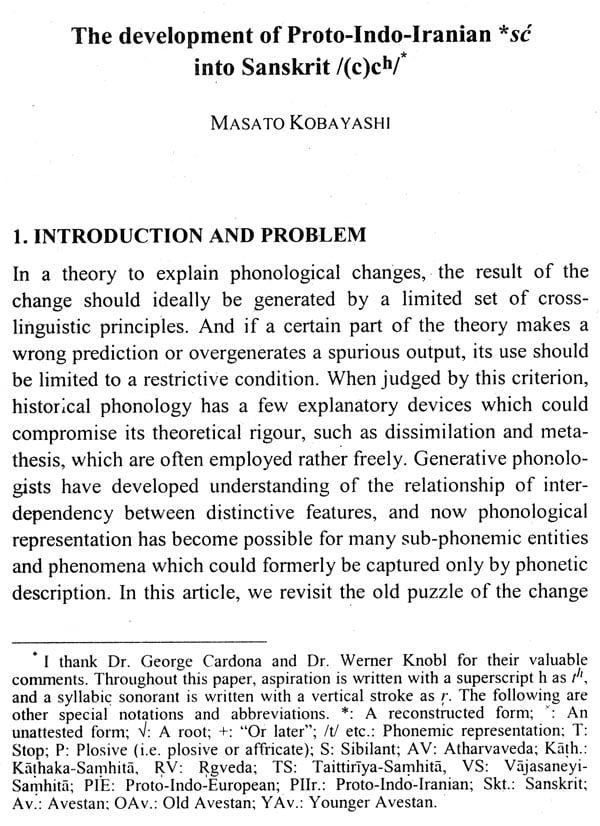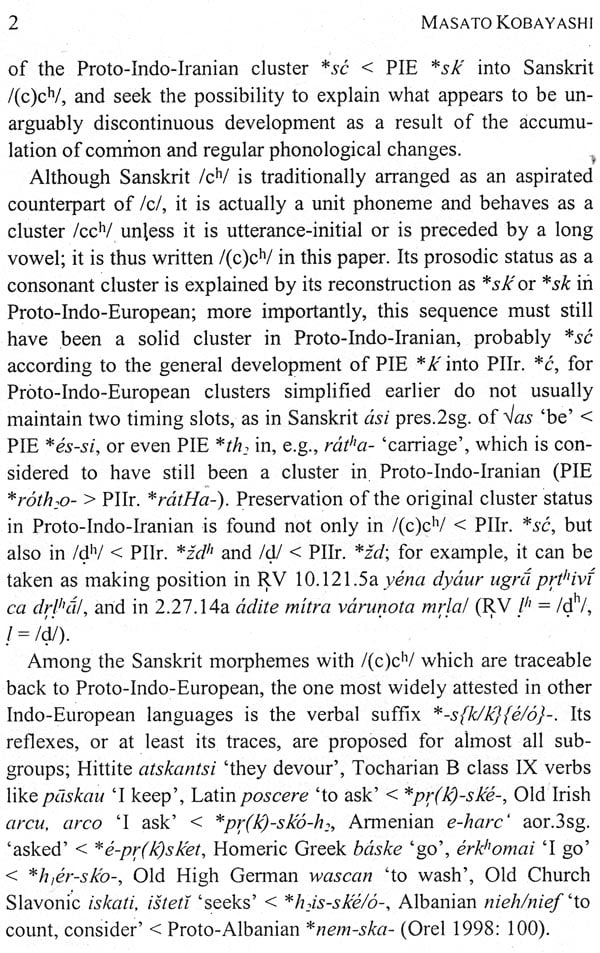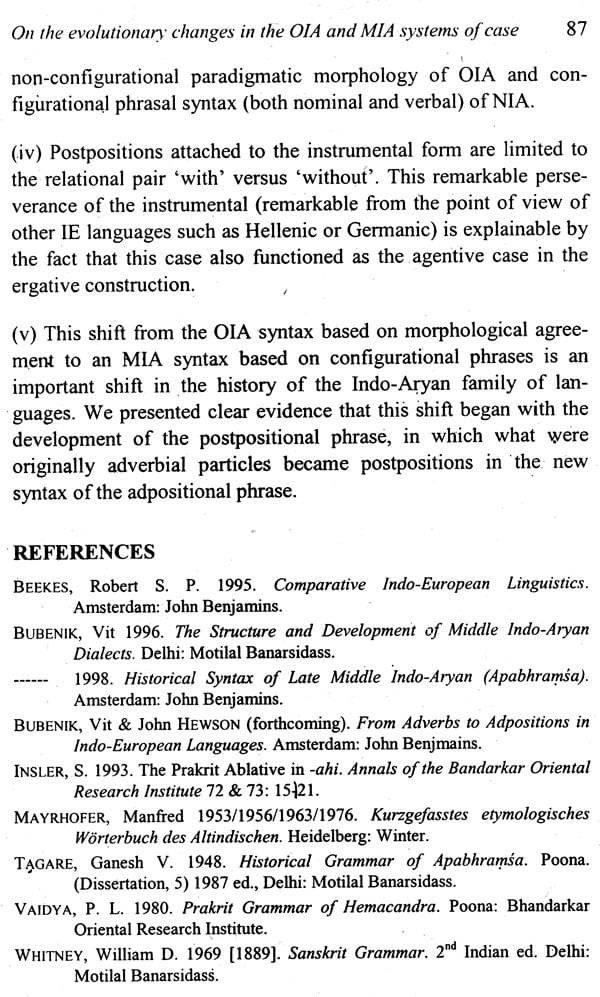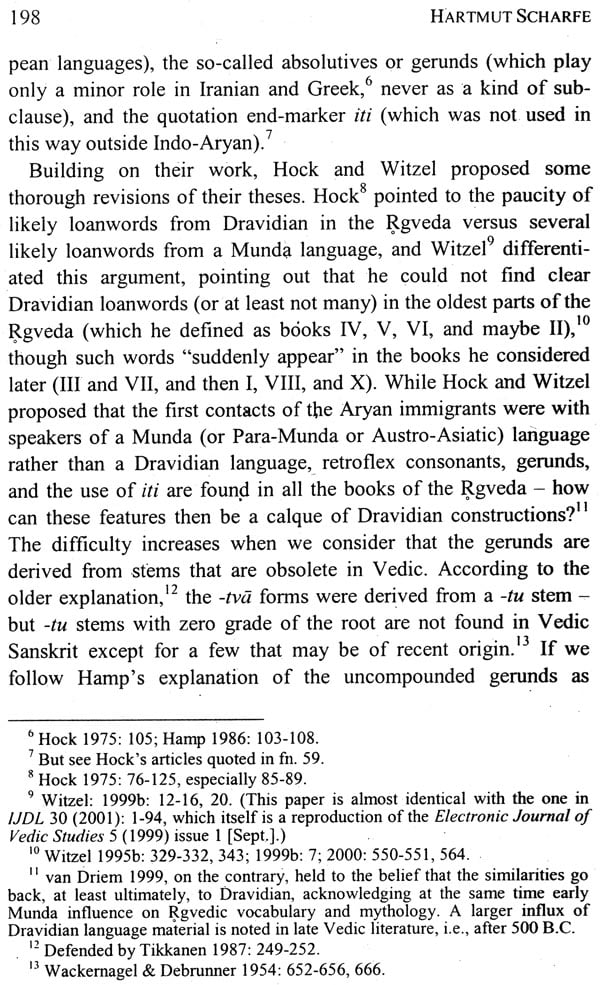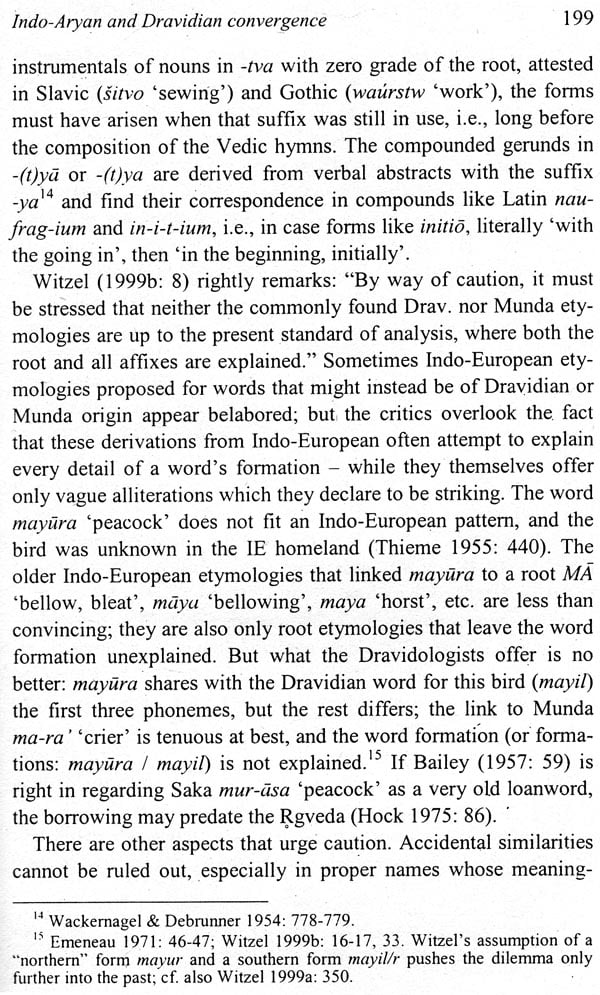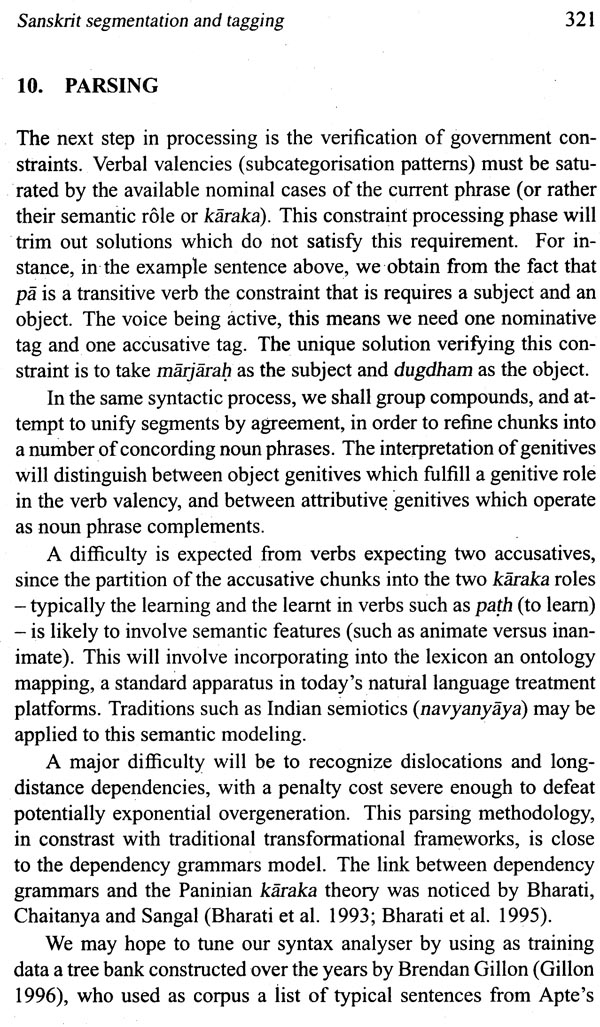
Themes and Tasks in Old and Middle Indo-Aryan Linguistics
Book Specification
| Item Code: | NAT652 |
| Author: | Bertil Tikkanen and Heinrich Hettrich |
| Publisher: | Motilal Banarsidass Publishers Pvt. Ltd |
| Language: | ENGLISH |
| Edition: | 2006 |
| ISBN: | 9788120830622 |
| Pages: | 326 |
| Cover: | HARDCOVER |
| Other Details | 9.00 X 6.00 inch |
| Weight | 570 gm |
Book Description
The present volume contains twelve of the sixteen papers presented at the Linguistics Section of the 12th World Sanskrit Conference (Helsinki, Finland, 13-18 July, 2003). The papers span a wide range of topics and time depth, extending from Common Indo-Iranian all the way to Modern Indo-Aryan. The problems and tasks addressed in these contributions pertain to. the historical phonology of Sanskrit, Vedic morphosyntax, the evolutionary morphosyntax of Indo- Aryan, the syntax of Buddhist Hybrid Sanskrit, Old Indo-Aryan etymologies, Iranian loanwords in Sanskrit, ancient Central and South Asian language contacts, the Sanskrit translation of the Avestan Haoma Liturgy, Gandhari lexicography, and the computer processing of Sanskrit. A trend which can be discerned in some of these papers, as well as in present-day Sanskrit studies in general, is the ever-increasing impact of modern linguistic theories on, in particular, phonology and syntax. Computational linguistics, which has much to offer in terms of utility and challenges, is a newcomer in the field.
BERTIL TIKKANEN is lecturer in Indian languages and docent of South Asian Linguistics at the Institute for Asian and African Studies of the University of Helsinki. Among his earlier publications are The Sanskrit Gerund: A Synchronic, Diachronic and Typological Analysis (1987) and several papers on South Asian areal linguistics and Burushaski. Hernricy Hetrricy holds the chair of Comparative Linguistics at the University of Wiirzburg. In addition to the monographs Untersuchungen zur Hypotaxe im Vedischem (1988) and Der Agens in passivischen Sdtzen altindoger- manischer Sprachen (1990 [1991]), he has published numerious papersA related to Indo-European linguistics. He is the editor of Kratylos and. Indoger- manische Syntax. Fragen und Perspektiven.
Considering the vast extant Vedic, classical and post-classical Sanskrit literature, the continuing use of Sanskrit as a spoken language, and the importance of Sanskrit to historical-comparative | linguistics, it is but natural that this language has attracted and still attracts so much attention among philologists and linguists the world over. Thanks to the efforts of countless scholars, starting with the native Indian grammarians, the actual description of the language is drawing nearer and nearer to perfection. Yet there are lingering synchronic and diachronic problems; and new questions emerge as new documents are found, the analysis goes deeper, and the linguistic and historical sciences progress.Considering the vast extant Vedic, classical and post-classical Sanskrit literature, the continuing use of Sanskrit as a spoken language, and the importance of Sanskrit to historical-comparative | linguistics, it is but natural that this language has attracted and still attracts so much attention among philologists and linguists the world over. Thanks to the efforts of countless scholars, starting with the native Indian grammarians, the actual description of the language is drawing nearer and nearer to perfection. Yet there are lingering synchronic and diachronic problems; and new questions emerge as new documents are found, the analysis goes deeper, and the linguistic and historical sciences progress.
The present volume contains twelve of the sixteen papers presented at the Linguistics section of the 12th World Sanskrit Conference (Helsinki, Finland, 13-18 July, 2003). The papers span a wide range of topics and time depth, extending from Common Indo- Iranian all the way to Modern Indo-Aryan. The general focus is, nevertheless, on Old and (early) Middle Indo-Iranian.
The papers have been arranged thematically as follows: historical phonology of Old Indo-Aryan (Kobayashi), Vedic morphosyntax (Hock, Kulikov), evolutionary aspects of Indo-Aryan morpho- syntax (Bubenik, Oguibénine), Old Indo-Aryan etymology (Seldeslachts), loanwords and substrata/convergence at various stages of Indo-Aryan/-Irantan (Baghbidi, Pinault, Scharfe), Sanskrit translation of Avestan (Sheldon), Gandhari lexicography (Glass), and computer processing of Sanskrit (Huet).
The present volume contains twelve of the sixteen papers presented at the Linguistics section of the 12th World Sanskrit Conference (Helsinki, Finland, 13-18 July, 2003). The papers span a wide range of topics and time depth, extending from Common Indo- Iranian all the way to Modern Indo-Aryan. The general focus is, nevertheless, on Old and (early) Middle Indo-Iranian.
The papers have been arranged thematically as follows: historical phonology of Old Indo-Aryan (Kobayashi), Vedic morphosyntax (Hock, Kulikov), evolutionary aspects of Indo-Aryan morpho- syntax (Bubenik, Oguibénine), Old Indo-Aryan etymology (Seldeslachts), loanwords and substrata/convergence at various stages of Indo-Aryan/-Irantan (Baghbidi, Pinault, Scharfe), Sanskrit translation of Avestan (Sheldon), Gandhari lexicography (Glass), and computer processing of Sanskrit (Huet).
At the end of the volume there is a brief index giving selected technical terms, proper names, and Sanskrit words of particular interest treated at length in one or several articles.
A trend which can be discerned in some of these papers, as well as in present-day Sanskrit studies in general, is the ever-increasing impact of modern linguistic theories of, in particular, both phonology and syntax. In these areas Sanskrit offers interesting challenges and data. Another strong trend is the study of languages _ In contact, as eminently exemplified by Scharte’s enlarged paper on the complex and much debated issue of linguistic convergence in South Asia. This field is particularly demanding in that it requires first-hand knowledge of the non-Aryan languages of the subcontinent. Computational linguistics is a new-comer in Sanskrit studies. As seen in Huet’s paper, a program for processing Sanskrit texts by computer not only has a utilitarian value for the student and the researcher, but it puts descriptive formalism to the most rigorous test.
We wish to thank Jouna Pyysalo, who assisted in proof-reading the manuscripts and suggesting corrections. The financial support of the Finnish Cultural Foundation to the Conference is duly and gratefully acknowledged.

